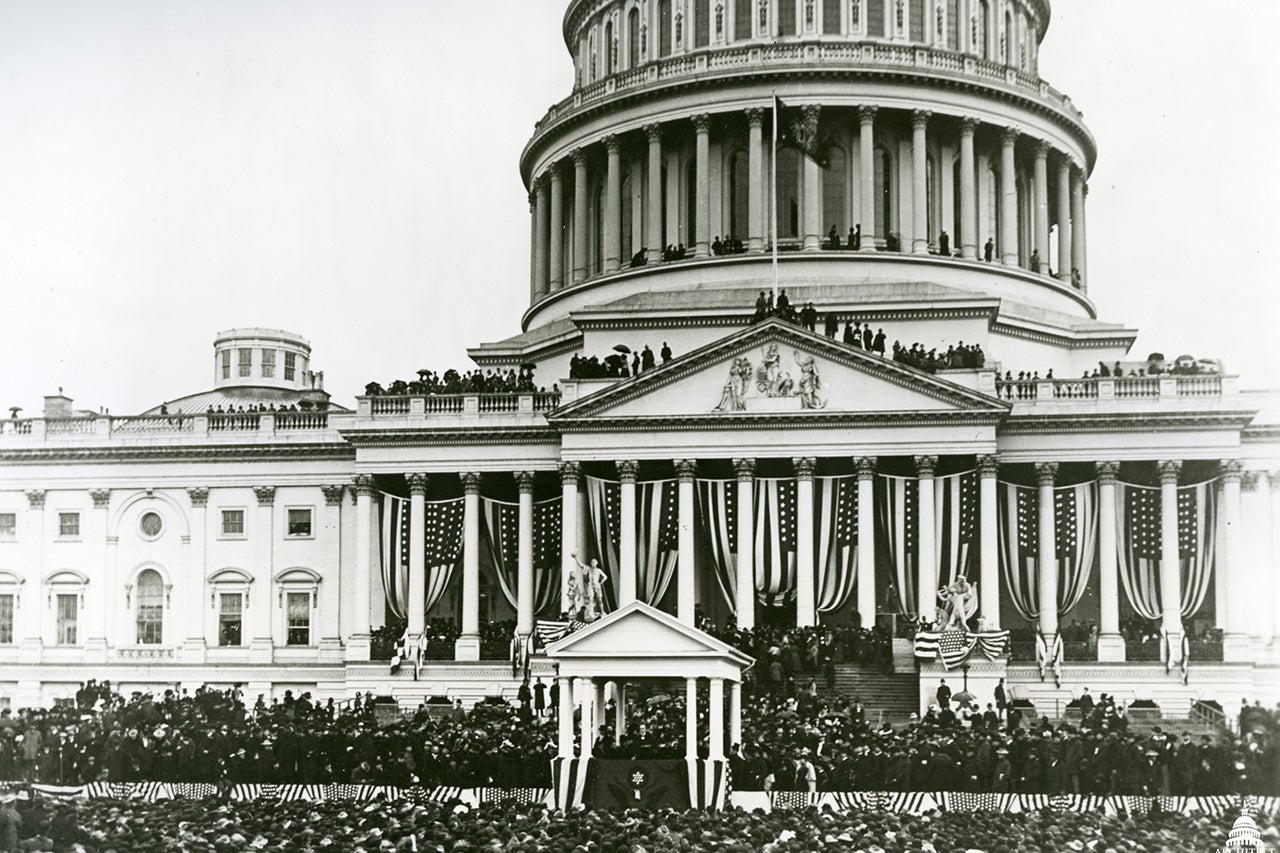While they take place every four years, presidential inaugurations are a little like snowflakes – no two are exactly the same.
When President-elect Donald J. Trump takes the oath of office on Jan. 20, 2017, to become the 45th President of the United States, he will continue a tradition that has been part of the nation’s political fabric for more than 200 years.
“Much of the ceremony we associate with the inauguration – swearing in on the Bible, parades, parties – have actually been around since George Washington,” says political science professor Claire Wofford. “While the Founders certainly rejected the monarchy of the European nations, there is certain power that derives from ‘pomp and circumstance’ and Americans have always wanted to celebrate the arrival of their new head of state. Continuing Washington’s traditions allows presidents to wrap themselves in the mantle of both history and ritual and to cement their role as our preeminent leader.”
There have been some changes since Washington was inaugurated as the first U.S. president in 1789. For starters, Washington’s inaugural address was the shortest on record at only 135 words. Some 68 years later, William Harrison set the mark for the longest inauguration speech at 8,445 words.
Communication professor Mike Lee says that although inaugural addresses are not composed or delivered equally, these speeches are invaluable statements to the nation, signaling how the chief executive sees the nation, its citizens and its role in the world.
“Inaugural addresses and State of the Union addresses exist on opposite ends of the spectrum of presidential communication,” he says. “Unlike the State of the Union, inaugural addresses tend to be reflective. Presidents use these speeches to consider the power residing in the office of the presidency, the values that will guide the administration, and, more broadly, America as one community.”
The ceremony first came to life for most Americans in 1897 when William McKinley’s inauguration was the first to be recorded by a motion picture camera. Calvin Coolidge’s oath was the first one to be aired on radio in 1925. The American public was able to see Harry Truman take the oath of office during the first television broadcast of an inauguration in 1949. And in 1997, Bill Clinton became the first president to have an inauguration live-streamed on the internet.
All but six presidents have taken the presidential oath of office in Washington D.C. Both George Washington and Chester Arthur took the oath in New York City, John Adams took his oath in Philadelphia, Theodore Roosevelt took the oath in Buffalo, New York, Calvin Coolidge was sworn into office in Plymouth, Vermont, and Lyndon Johnson took the oath in Dallas.
Lee says he shares the view of most presidential scholars in favoring Abraham Lincoln’s second inaugural address as the gold standard of the genre.
“Delivered just after Lincoln won reelection and Sherman seized Savannah, its message of ‘malice toward none and charity for all’ was shaped for a time of tumult. Yet Lincoln’s fond hopes and fervent prayers for the war’s conclusion are timeless, poetic, and poignant.”






